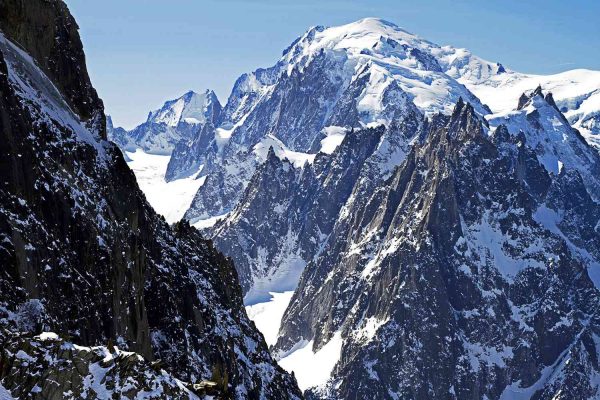Europe
Discovering Mont Blanc, Europe’s Highest Peak

The crowning pinnacle of the French Alps, Mont Blanc holds the distinction of being the highest peak in Europe. The mountain’s name translates to ‘White Mountain’, which obviously stems from the fact that it’s covered in snow throughout the year.
It sits at around fifteen thousand feet above sea level, right on the border between France and Italy. In fact, there’s been quite a lot of disagreement over the years as to which country the peak really belongs to – but France has pretty much won the debate.
The mountaineering history of Mont Blanc
As you might expect, this mountain has long been a target for ambitious mountaineers. While nowadays it’s quite straightforward to reach the summit, or close to it, that hasn’t always been the case.
The first people on record to attain the summit were Savoyard mountaineer Jacques Balmat, and his physician, Michel-Gabriel Paccard. This was in 1786. At the time, most guides believed the upward route to be impossible – and the pair managed to complete the route without ropes or axes.
Of course, shortly after someone proves that an impossible thing is, in fact, possible, we tend to see lots of other people successfully replicate the achievement (the four-minute mile being perhaps the best example). In this case, Balmat and Paccard blazed a trail for dozens of other mountaineers in the decades that followed. The first woman to reach the summit was Marie Paradis, who accompanied Balmat on one of his follow-up trips in 1808.
Within a hundred years or so, there were permanent scientific facilities established near the summit. The meteorologist Joseph Vallot built a small shelter up there, which has been rebuilt and now serves as a shelter for mountaineers.
Are you inspired to give the challenge a go?
While you might not put Mont Blanc in the same category as some of the highest peaks in the Himalayas, it remains a substantial proposition, and one that deserves serious preparation. Every year, the mountain claims several lives – and so it should be respected.
If you’re heading up the mountain for the first time, it makes sense to go for the Tour du Mont Blanc, self-guided. There should be plenty of other travellers on the route, especially if you’re climbing at the right time of day and year.
There are several routes leading to the summit, the most popular being the Gouter route first taken by Balmat and Paccard. This requires the least technical skill, and it’s favoured by most people heading up. Once you get a few ascents under your belt, you might consider some of the alternatives, like the Trois Monts Route – you’ll need a guide if you’re going to do this, though.
